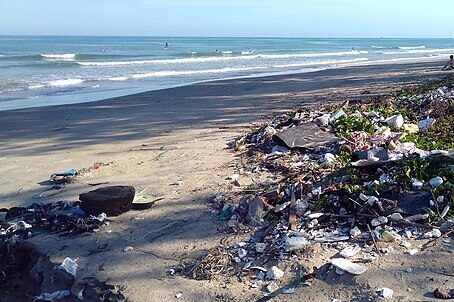
Plastic thrown into the ocean can be eaten and digested by this bacterium.
The researchers stated that while it is exciting, it will not address the issue of plastic.
A bacterium that can break down plastic has been discovered by scientists, and it probably already does so in our oceans. It is possible that the bacterium Rhodococcus ruber is responsible for converting about 1% of the plastic in our oceans into carbon dioxide each year. Researchers assert that the number could be even higher, which could be significant news for the issue of plastic pollution in our country.
If you read a lot of science news, you probably saw exciting headlines about microbes that eat plastic over the years. From an enzyme that has the potential to degrade PTA, a component of plastic bottles, to another enzyme that has the capacity to consume plastic bottles six times faster. This makes the problem with plastic appear to be solved by magic.
The reality, on the other hand, is far more nuanced. Between 1950 and 2015, 117 and 320 million tons of plastic were accumulated in the marine environment, with between 1.7% and 4.6% of the world’s plastic waste ending up in the ocean. Land is the source of most of the plastic in the ocean. Simply put, there is a lot of plastic in the environment, and it is growing at a faster rate with each passing year. It travels through rivers and eventually reaches the ocean. However, researchers claim that this bacterium may be responsible for some of the missing plastic.
“[Our] experiments are mainly a proof of principle. I see it as one piece of the jigsaw, in the issue of where all the plastic that disappears into the oceans stays. If you try to trace all our waste, a lot of plastic is lost. Digestion by bacteria could possibly provide part of the explanation,” Maaike Goudriaan, study lead author, said in a statement.
A bacterium that eats plastic
With the Rhodococcus ruber, Goudriaan and colleagues conducted a laboratory experiment. They introduced it to polyethylene by marking it with carbon-13, an isotope of slightly heavier carbon atoms. The researchers treated the plastic with ultraviolet light before throwing it to the bacterium because sunlight partially breaks down plastic into small pieces.
After that, in a bottle, they mixed the bacteria and plastic with seawater. They found the carbon-13 atoms in carbon dioxide molecules above the water. This indicates that the Rhodococcus ruber was metabolising the plastic into CO2 and energy. They claimed that this is the first time a study has demonstrated that bacteria can digest plastic and convert it into CO2.
The total amount of plastic the bacterium was converting was also estimated by the researchers to be approximately 1.2% of the annual amount of plastic in our oceans. However, this is probably an underestimate, Goudriaan said. “We only measured the amount of carbon-13 in CO2, so not in the other breakdown products of the plastic,” he added.
Despite their excitement over their discovery, the researchers stated that microbial digestion is not a solution to the major issue of ocean plastic pollution. They are currently conducting experiments with real sea water and sediments they collected from the Wadden Sea floor to determine whether “wild” bacteria can eat plastic “in the wild.”
“The first results of these experiments hint at plastic being degraded, even in nature,” Goudriaan said. “A new Ph.D. student will have to continue that work. Ultimately, of course, you hope to calculate how much plastic in the oceans really is degraded by bacteria. But much better than cleaning up, is prevention. And only we humans can do that.”
Marine Pollution Bulletin was the journal that published the study.
——————————————————————————
At Natural World Fund, we are passionate about stopping the decline in our wildlife.
The declines in our wildlife is shocking and frightening. Without much more support, many of the animals we know and love will continue in their declines towards extinction.
When you help to restore a patch of degraded land through rewilding to forests, meadows, or wetlands, you have a massive impact on the biodiversity at a local level. You give animals a home and food that they otherwise would not have had, and it has a positive snowball effect for the food chain.
We are convinced that this is much better for the UK than growing lots of fast-growing coniferous trees, solely to remove carbon, that don’t actually help our animals to thrive.
This is why we stand for restoring nature in the UK through responsible rewilding. For us, it is the right thing to do. Let’s do what’s right for nature!
Support our work today at https://naturalworldfund.com/ and join in the solution!

